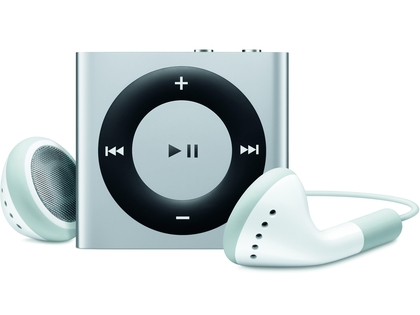Apple : In Depth: 10 years of iPod: the gadget that put Apple in your pocket |
| In Depth: 10 years of iPod: the gadget that put Apple in your pocket Posted:  The history of the iPodTen years ago on Sunday, the iPod was launched. And it was with more of a whimper than a bang. The launch event on 23 October 2001 was held at Apple's Cupertino campus for a small gaggle of invited journalists, and not even deserving of a proper MacWorld keynote. Despite the lack of prestige, Steve Jobs obviously knew he was onto a winner, because he launched iPod with the following words: "The biggest thing about the iPod is that it holds 1,000 songs. This is a quantum leap because for most people it's their entire music library. This is huge." Then came the killer line. "The coolest thing about the iPod is that your whole music library fits in your pocket." That was the hook that did it – a simple concept that everybody could understand. With those words, Steve Jobs had created an entirely new industry based around a portable digital music player – an industry that Apple would dominate for the next decade, and probably beyond that. Companies like Creative and Diamond Multimedia were there first, but it was Apple that made the market take off. A winning designA great idea without great implementation wouldn't cut it though, and it was also the design of the iPod that made it successful. It was ultra-thin (for the time) and had a huge capacity (again, for the time) at 5GB. It also had 20 minutes of skip protection, so you could take it jogging, cycling or wherever you wanted without skipping a beat. It was fast, too. It had a FireWire connection for quickly getting your music off your Mac and onto the iPod. Over time, as the comparable USB 2.0 standard evolved, Apple quietly dropped FireWire support altogether, but at the time it was a big selling point. Back then it would take roughly five minutes to transfer a CD to a music player over USB, but FireWire cut this down to 10 seconds. That's 30 times faster! Even the original iPod's ten hours of battery life was considered 'extraordinary'. The first iPod only worked on a Mac, but Apple soon realised that if the iPod was really going to take off it needed to have a wider vision – a vision that encompassed Windows and a digital music store from which people could purchase and download digital music with ease. Nobody thought it could be done, but somehow Apple managed to get all the big music labels to come on board, with iPod at the centre of the whole thing. The rest, as they say, is history. Join us for our look back at the last ten years of the iPod. The range starts small, expands and then concentrates on what it does best as Apple broadens its horizons with the iPhone and iPad as its new darlings. 2001-20041st gen iPod
2nd gen iPod
3rd gen iPod
1st gen iPod mini
4th gen iPod
4th gen iPod photo
2005-20061st gen iPod shuffle
2nd gen iPod mini
4th gen iPod colour
1st gen iPod nano
5th gen iPod
2nd gen iPod nano
2nd gen iPod shuffle
2007-now6th gen iPod classic
1st gen iPod touch
3rd gen iPod nano
Revision of 6th gen iPod classic
2nd gen iPod touch
4th gen iPod nano
3rd gen iPod shuffle
Further revision of 6th gen iPod classic
3rd gen iPod touch
5th gen iPod nano
Revision of 3rd gen iPod shuffle
4th gen iPod touch
6th gen iPod nano
4th gen iPod shuffle
---------------------------------------------------------------------------------------------------- |
| Jobs railed against 'what would Steve do?' culture Posted: %20copy-470-75.jpg) Former presidential candidate and Apple board member Al Gore has insisted that Steve Jobs was against leaving a legacy at the company of trying to second-guess what he would have done. Gore was a friend of Jobs, and he believes his death should not leave behind a culture at Apple of 'what would Steve do?'. "He used to talk initially about how after Walt Disney died, the company always got in trouble about asking 'what would Walt do in this situation.?'" Gore said. "And he made it very clear – 'I don't want that at Apple.' He made it clear to Tim Cook and everyone else 'Don't ask what Steve would have done. Follow your own voice.'" BreakthroughGore, speaking at the All Things Digital Asia conference also discussed Jobs' impact on the world, and insisted that good times are ahead for his beloved Apple. "Steve was responsible for so many tremendous breakthrough inventions — iPod, iPad, iPhone, Pixar," Gore continued. "But of all of them, I think his greatest work was Apple itself. He created an organization that creates technology that people love. "It's really quite unique and extraordinary. And that's going to continue. There's a lot of stuff in the pipeline and the team he left behind is really firing on all cylinders." |
| You are subscribed to email updates from TechRadar: All latest Apple news feeds To stop receiving these emails, you may unsubscribe now. | Email delivery powered by Google |
| Google Inc., 20 West Kinzie, Chicago IL USA 60610 | |




























No comments:
Post a Comment